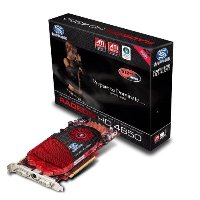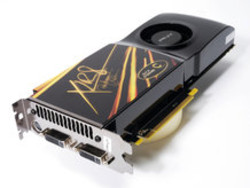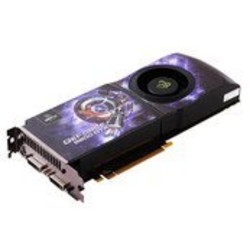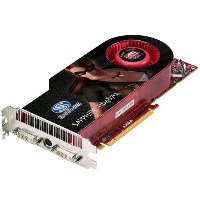Editor's Choice: Top 10 graphics cards
Want the best 3D graphics on your PC? Try these graphics cards
ATI Radeon 4850

The Radeon HD 4800 GPU, previously codenamed RV770, is absolutely brilliant.
In fact, it might just be the most efficient, effective and elegant graphics chip that the world has ever seen. It certainly delivers a bigger bang for your buck than any graphics chip before.
And yet it is not quite the fastest. It's actually quite tricky to choose a direct competitor, since the arrival of the 4800 will inevitably push prices of existing graphics chipsets from NVIDIA down.
The new Radeon HD 4800 comfortably has the measure of its closest competition – the GeForce 8800GTS. OK, it's not the most powerful GPU on the planet.
That honour remains with NVIDIA's GeForce GTX 280. But at around £450, the GTX 280 costs over three times as much as the 4850. A brilliant card at an absolute bargain price.
NVIDIA GeForce 9800GTX

Nearly two years ago, the much-heralded age of the DirectX10-capable graphics card dawned, as the supreme G80-powered GeForce 8800GTX dropped into the TechRadar office. We had to wait 12 long months for a refresh, during which time we were treated to a mass of mid-range cards, including the excellent 8800GT.
And while the 9800GTX and its GX2 uber-sister were extremely powerful cards, they were by no means the giant leap forward we were hoping for.
The long and short of it is that if you've got yourself an 8800GTX or Ultra, and felt that twinge of envy at the announcement of this new generation of top-end cards, then you can stop worrying.
In fact, you can probably be down-right smug as your slightly geriatric cards are still more than capable of holding their own against these youngbloods. The 9800 cards are good, but in terms of their place in the market, stillborn is the only way to describe them.
NVIDIA GeForce 9800GX2

The GX2 follows the example of the old 7950GX2, strapping two G92-stuffed PCBs together. But this time both PCBs face into the same heatsink and are housed in a vaguely coffin-like surround.
The clock speeds are slightly slower than the GTX, but a fair bit of optimising has gone into making this single-card SLI offering an impressive piece of engineering.
The GX2 is more powerful than the GTX, mainly due to its brute force SLI set-up. Still though, there's no real reason to pay the money.
.
NVIDIA GeForce GTX260
The GTX260 is most impressive at the ultra high-end resolution of the 30" monitor brigade. We were disappointed with the performance of the GX2 at 2560x1600; after all we were expecting all that bandwidth and GPU grunt to shunt around pixels on a 30" display with gay abandon.
The GTX260 proved to be no hi-res slouch, doubling the GX2's Crysis performance. The real problem with this card though, is that Nvidia kinda stole its own thunder. If it hadn't bothered with the 9800 cards, the 260 would have seemed much better. However, it is a step up, and at a fairly decent price.
ATI Radeon HD 4870

As good as the 4850 is, the new 4870 variant is even more impressive. Yes, it costs 50 per cent more than the 4850 but doesn't quite deliver 50 per cent more performance.
But the 4870 has an even better party trick. It makes the latest uber-GPU from arch rival NVIDIA, the GeForce GTX 280 (below), look massively overpriced and just a little bit silly.
The really clever bit is how ATI has managed to up the shader and texture count by 150 per cent courtesy of a boost in transistors of just 40 per cent.
In many respects, the 4870 is no different from the cheaper 4850. It has the same 800 shaders, 40 texture samplers and 16 render output units.
And the good news is that there is little reason to pay the £400 NVIDIA is demanding for the GTX 280. Incredibly, ATI has come up with a GPU that delivers a remarkably similar gaming experience for half the price.
NVIDIA GeForce GTX280
However, value for money is one thing this card cannot offer. The ATI Radeon 4850 is less than a third of the price of the GTX280 and doesn't lag terrible far behind in terms of gaming benches.
Still, the GTX280 finally delivers on the promise of high resolution DX10 gaming, even if it still refuses to support DX10.1. It is an excellent card, but we can't help but feel it's a little over priced.
Sign up for breaking news, reviews, opinion, top tech deals, and more.

James was part of the TechRadar editorial team for eight years up until 2015 and now works in a senior position for TR's parent company Future. An experienced Content Director with a demonstrated history of working in the media production industry. Skilled in Search Engine Optimization (SEO), E-commerce Optimization, Journalism, Digital Marketing, and Social Media. James can do it all.